Ever wondered how artists give their drawings that realistic depth and dimension? It’s all about a fundamental technique called perspective. In this blog post, we’re taking a look at perspective, focusing specifically on the versatile two-point perspective.
Perspective is what adds depth and realism to your artwork, mimicking how we perceive the world around us. Whether you’re new to drawing or looking to expand your skills, understanding two-point perspective opens up new ways to create compelling compositions.
Throughout this guide, we’ll explain what two-point perspective is, how it enhances your drawings, and most importantly, how you can master this technique to improve your art. So, if you’re ready to enhance your sketches and paintings with depth and dimension, let’s explore the world of two-point perspective together.
Important Art Terms in Perspective Drawings
To grasp two-point perspective, it’s essential to familiarize yourself with several key terms that form its foundation. These terms help define how depth and dimension are created in your drawings:.
Horizon Line
The horizon line is the eye level of the viewer in the artwork. It represents the point where the sky meets the ground or other elements in the scene.
Vanishing Points
Vanishing points are points on the horizon line where parallel lines appear to converge. In two-point perspective, there are two vanishing points.
Converging Lines
Converging lines are lines in the artwork that appear to converge towards the vanishing points. These lines create the illusion of depth and distance in the composition.
What Is two point perspective?
Two-point perspective is a type of linear perspective, a fundamental technique in art that simulates how we perceive depth in the real world. Unlike one-point perspective, which uses a single vanishing point, two-point perspective employs two vanishing points placed on the horizon line. These vanishing points dictate the direction in which parallel lines, such as edges of buildings or streets, converge as they recede into the distance.
This technique is particularly powerful for portraying scenes from an angled viewpoint, where objects and architecture appear dynamic and dimensional. Imagine standing on a street corner, observing skyscrapers looming overhead and streets stretching into the distance. In two-point perspective, vertical lines remain upright, while horizontal and diagonal lines converge towards their respective vanishing points on the horizon line.
By employing two-point perspective, artists can create compositions that convey depth and realism, capturing the complexities of urban landscapes, interiors, and other scenes with multiple planes and angles. This method enhances the viewer’s sense of immersion, as if they’re experiencing the space firsthand.
Just as one-point perspective simplifies depth perception from a direct viewpoint, two-point perspective expands artistic possibilities by introducing depth and spatial relationships from an angled perspective. It’s a versatile tool that enriches artwork with lifelike depth, mirroring the way our eyes interpret spatial dimensions in the physical world.

In this illustration, we see an example of a drawing created using two-point perspective.
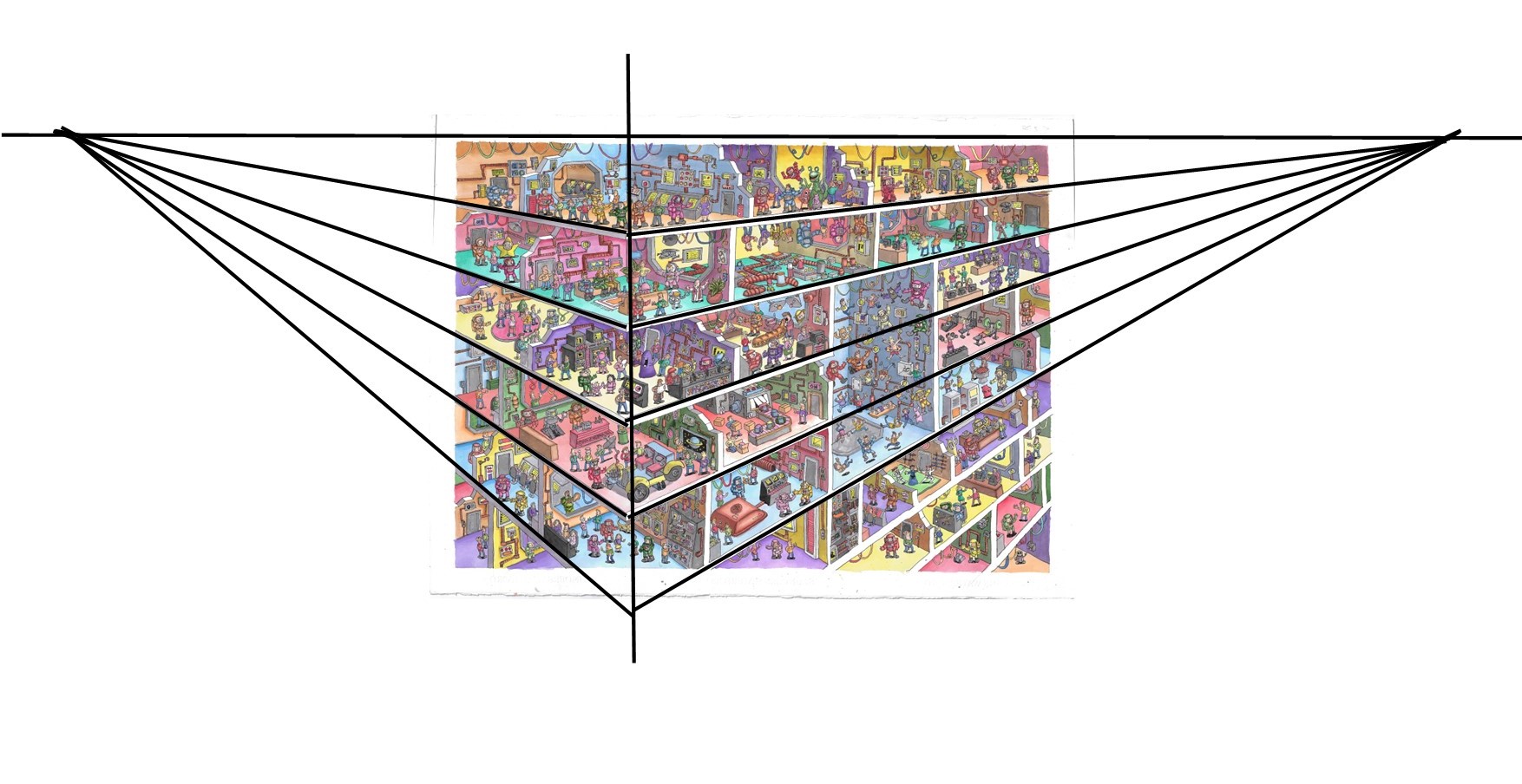
here, lines have been added to demonstrate how all the diagonal lines in the composition converge towards two vanishing points at the top of the picture. This convergence defines both the vanishing points and the horizon. In this case, the horizon is positioned at the top of the picture.
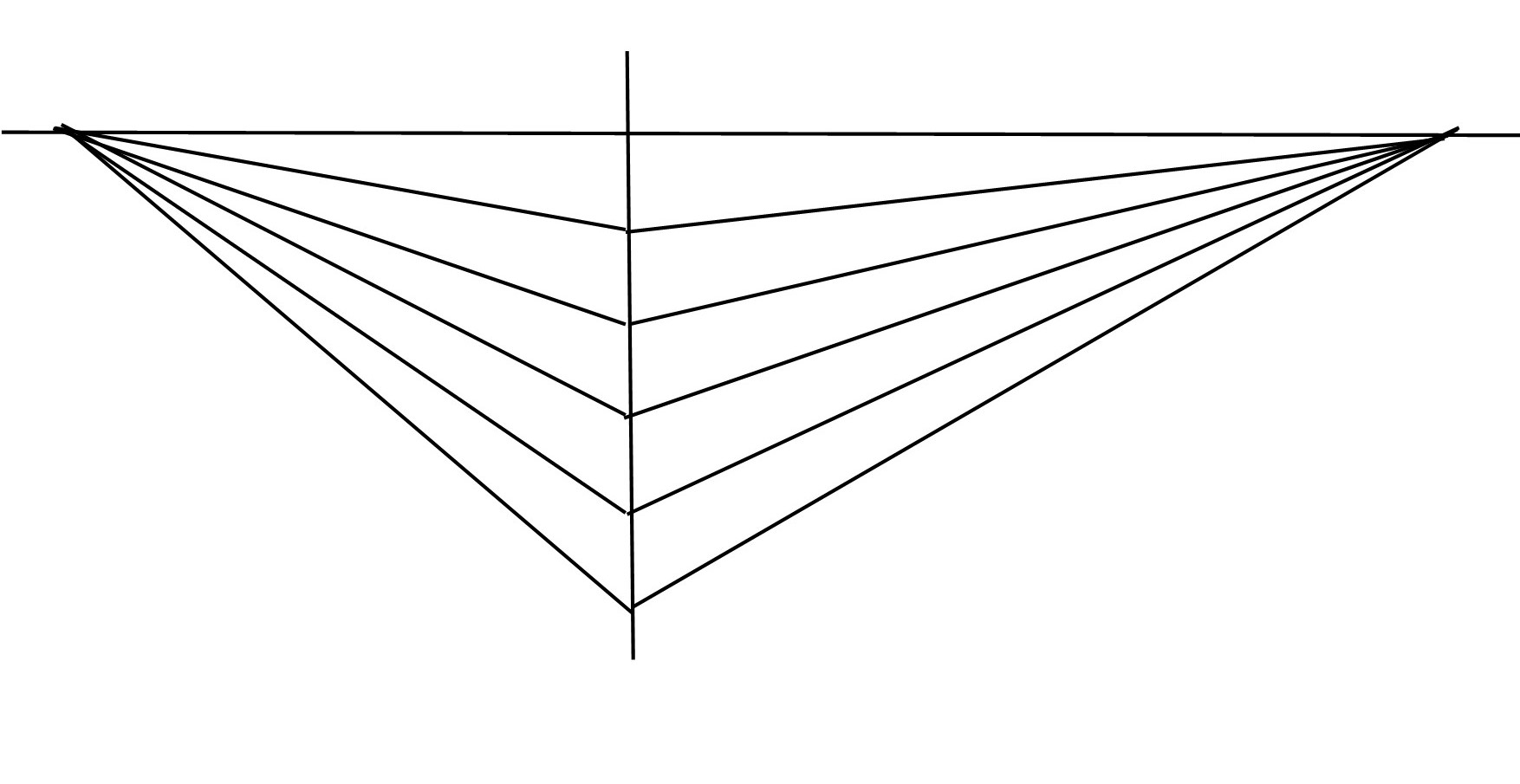
With the original picture removed, only the converging lines remain. It’s now clear how these lines work together, all leading to the vanishing points on the horizon.
How to Draw in Two-Point Perspective
Drawing in two-point perspective might seem daunting at first, but by breaking it down into simple steps, you can master this technique and bring your drawings to life. Here’s a step-by-step guide to get you started:
Step 1: Set Up Your Horizon Line and Vanishing Points
- Draw the Horizon Line: Start by drawing a horizontal line across your paper. This line represents the viewer’s eye level.
- Place the Vanishing Points: Mark two points on the horizon line. These are your vanishing points (VP1 and VP2). Make sure they are spaced well apart for a more natural perspective.
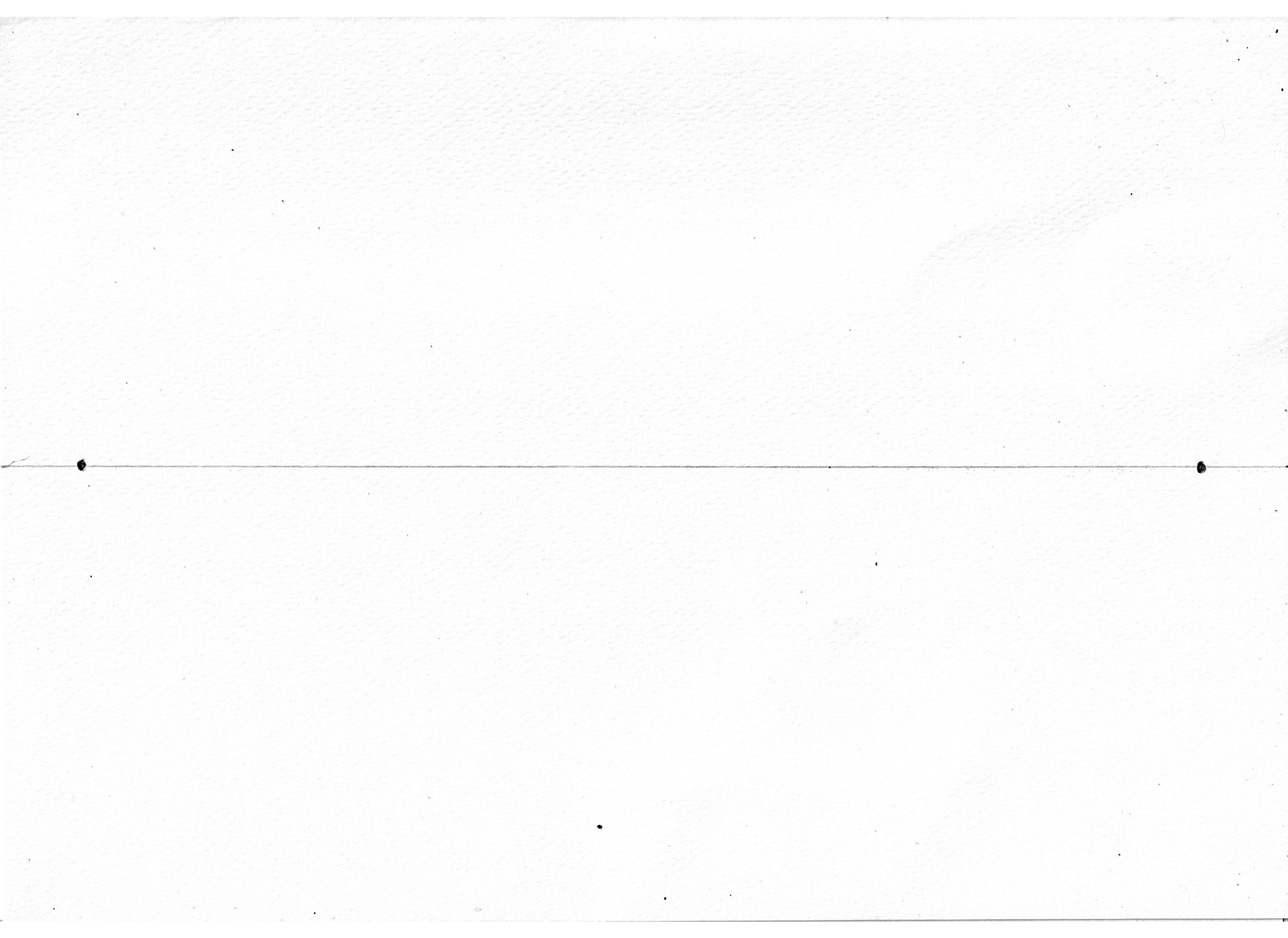
Step 2: Draw the Corner Line
Draw the Corner Line: Begin by drawing a vertical line below the horizon line. This line represents the nearest corner of your object (in this case, a box). Placing the line below the horizon creates the illusion that you are looking down at the object from above.
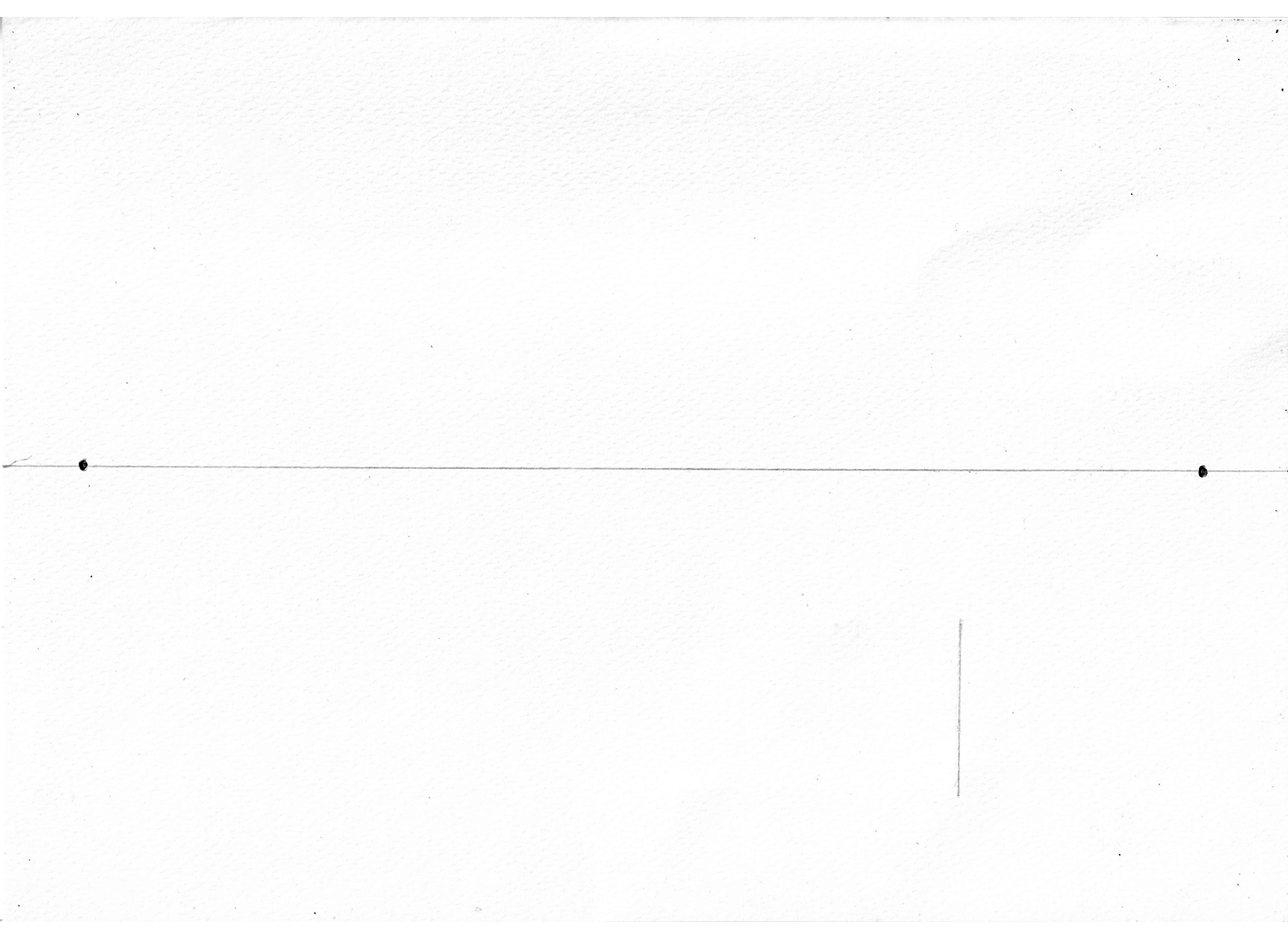
Step 3: Draw Converging Lines
Add Converging Lines: From the top and bottom of the corner line, draw lines that converge towards each of the vanishing points (VP1 and VP2). These lines will form the sides of your box.
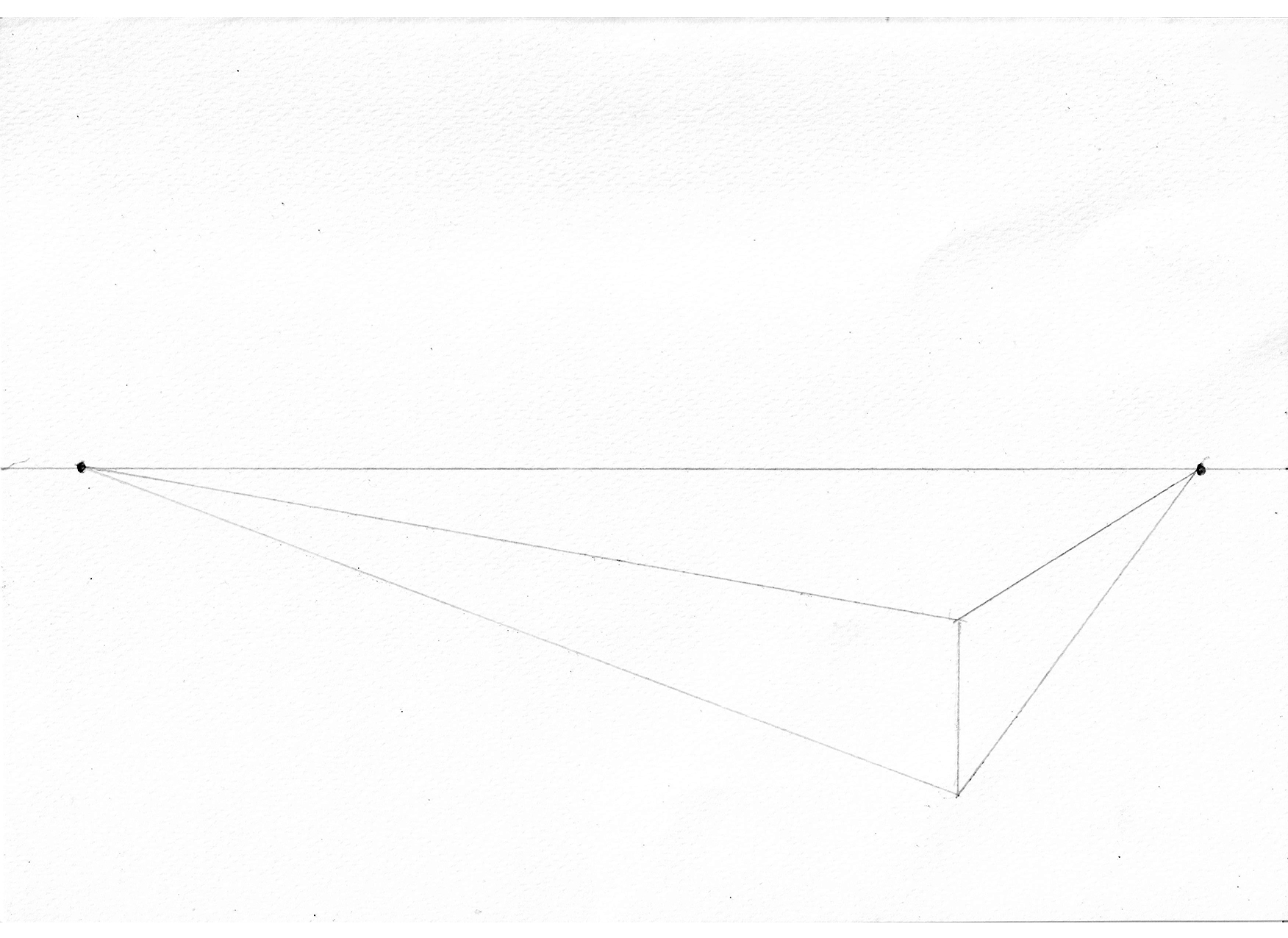
Step 4: Define the Left and Right Planes
Draw Vertical Lines: Within the converging lines, add two vertical lines to define the left and right planes of the box. These vertical lines should be parallel to the corner line you drew earlier.
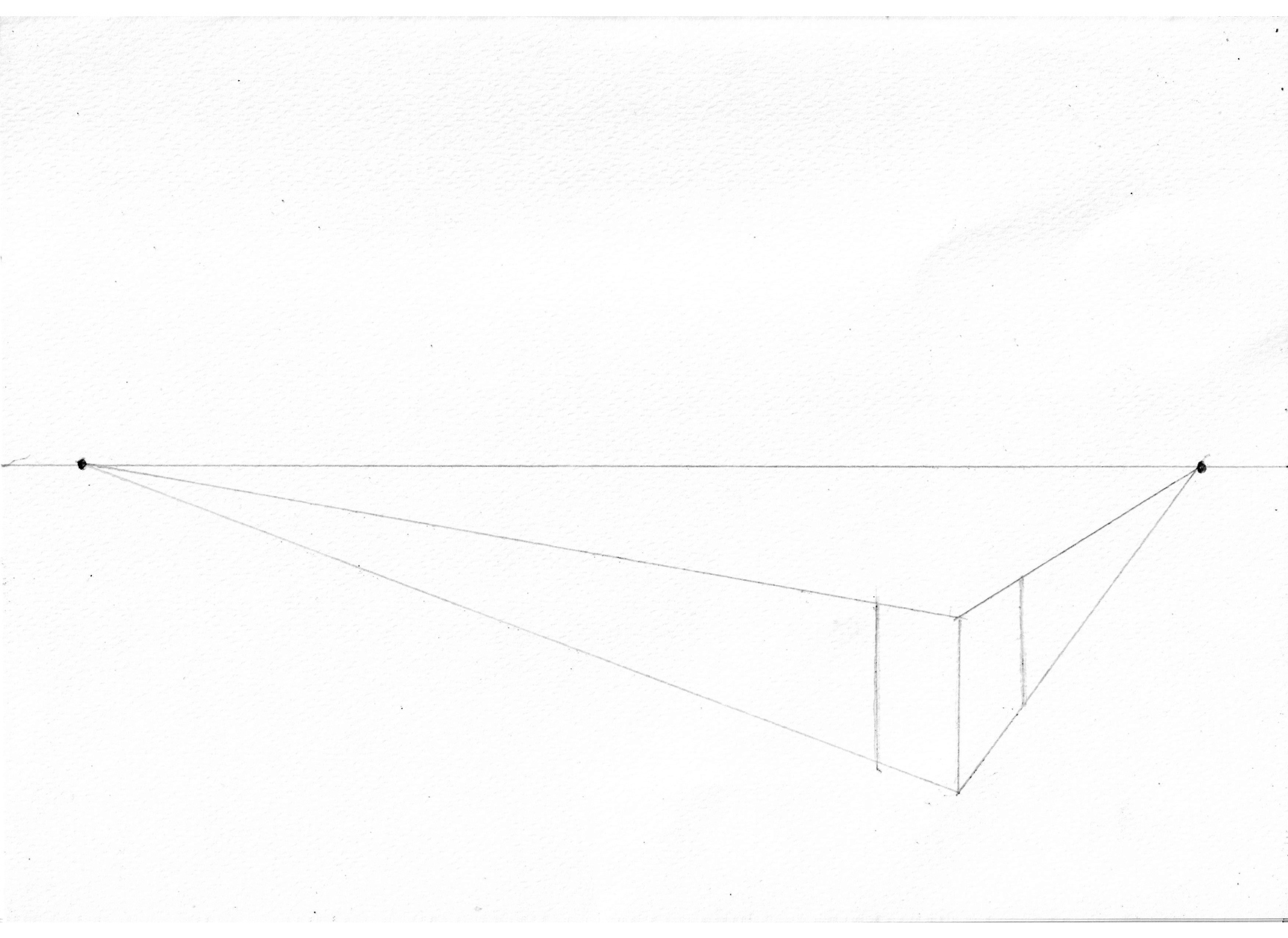
Step 5: Draw Additional Converging Lines
Connect the Vertical Lines to the Vanishing Points: From the points where the vertical lines (defining the side planes) meet the converging lines, draw new lines converging towards the opposite vanishing point (VP1 for the right plane and VP2 for the left plane). This will complete the top and bottom planes of the box, defining its full shape.
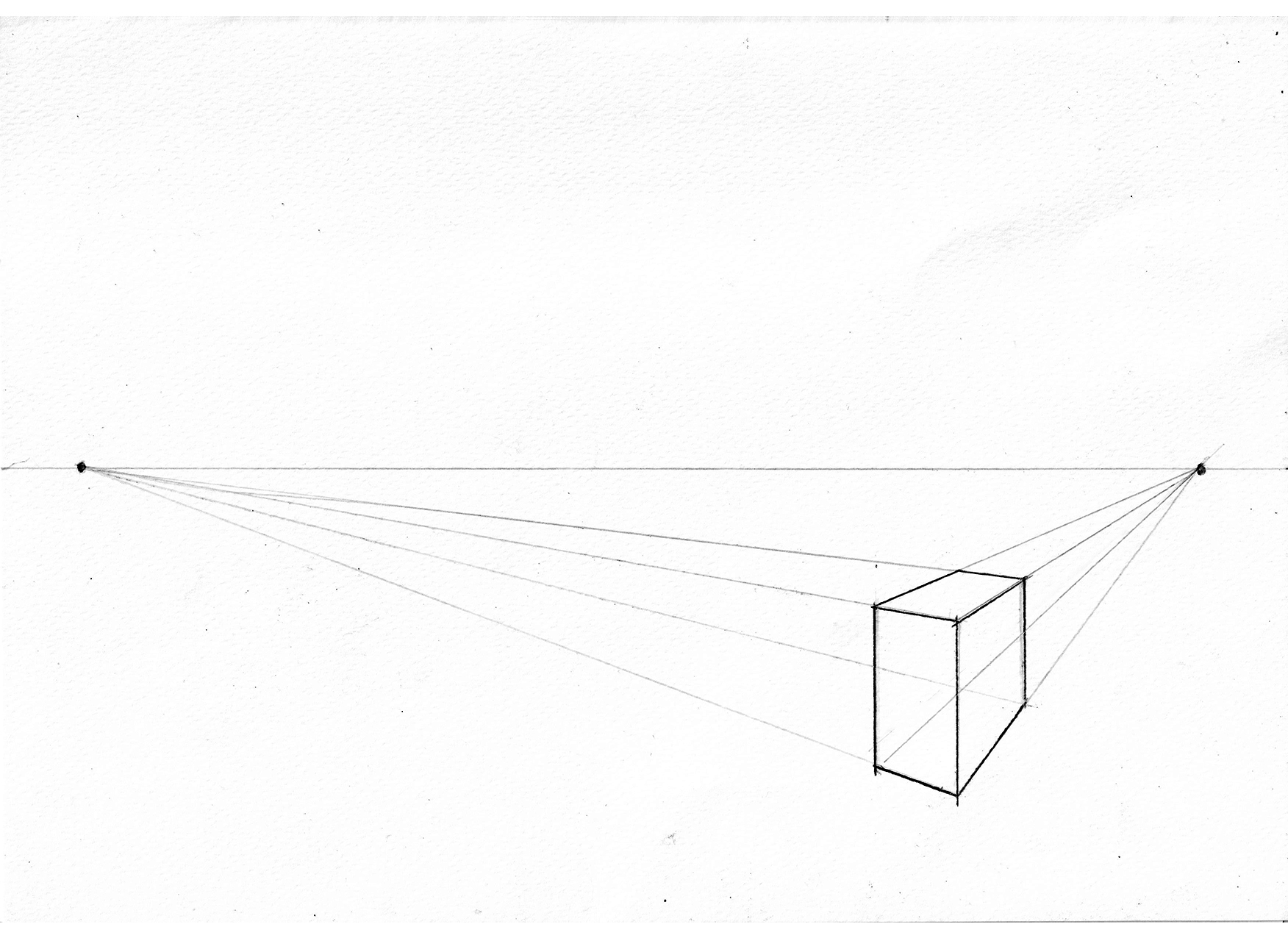
Step 6: Add a Second Box
Draw Another Corner Line: Introduce a second vertical line for a new box, but place it above the horizon line. This positioning creates the illusion that you are looking up at the box from below.
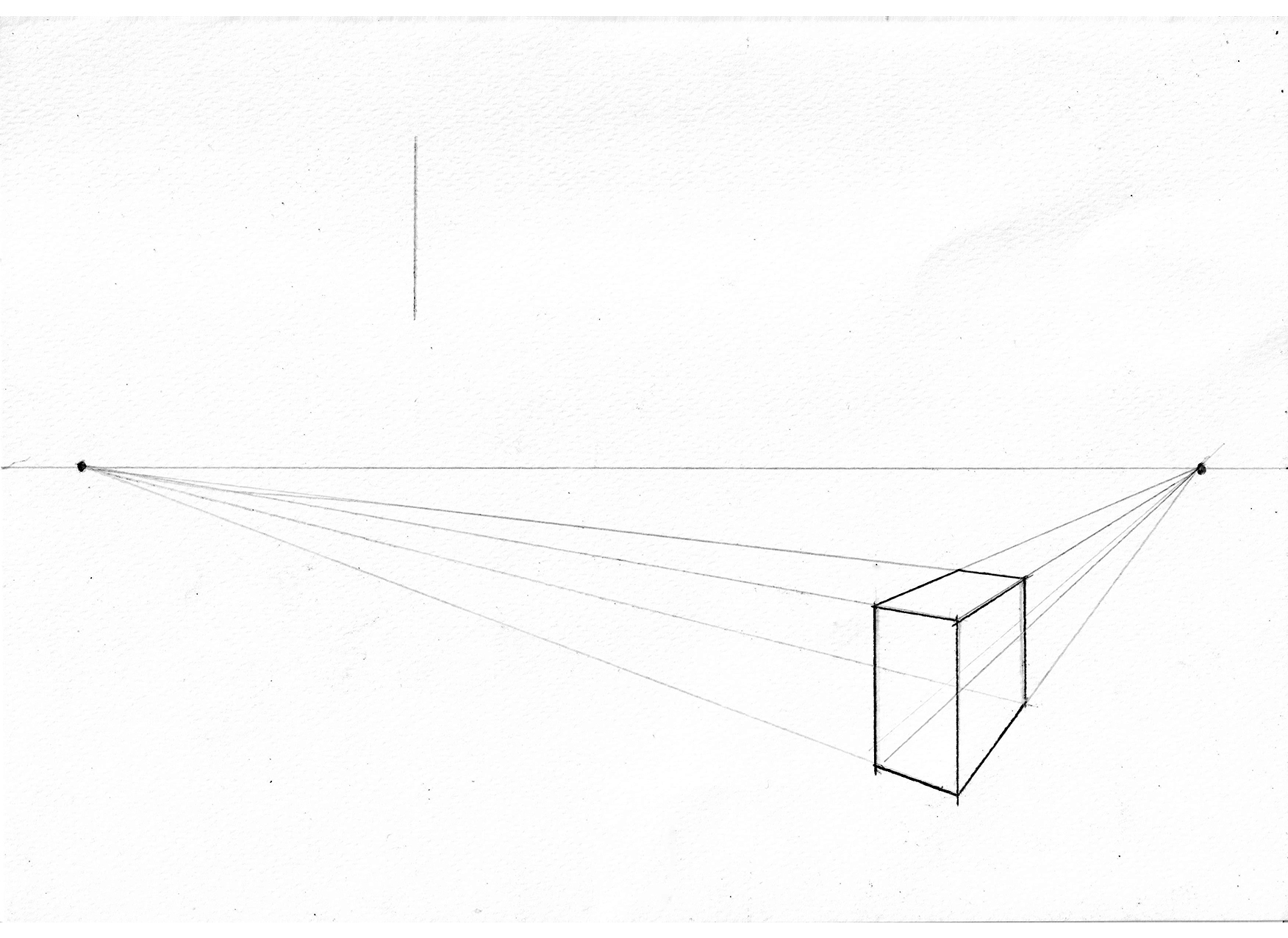
Step 7: Repeat Previous Steps to Create a Second Box
- Add Converging Lines: From the top and bottom of the second corner line, draw lines converging towards each vanishing point (VP1 and VP2).
- Define the Planes: Within these converging lines, add two vertical lines to define the left and right planes of the second box.
- Connect to Opposite Vanishing Points: From the points where the vertical lines meet the converging lines, draw new lines converging towards the opposite vanishing point to complete the top and bottom planes of the second box.
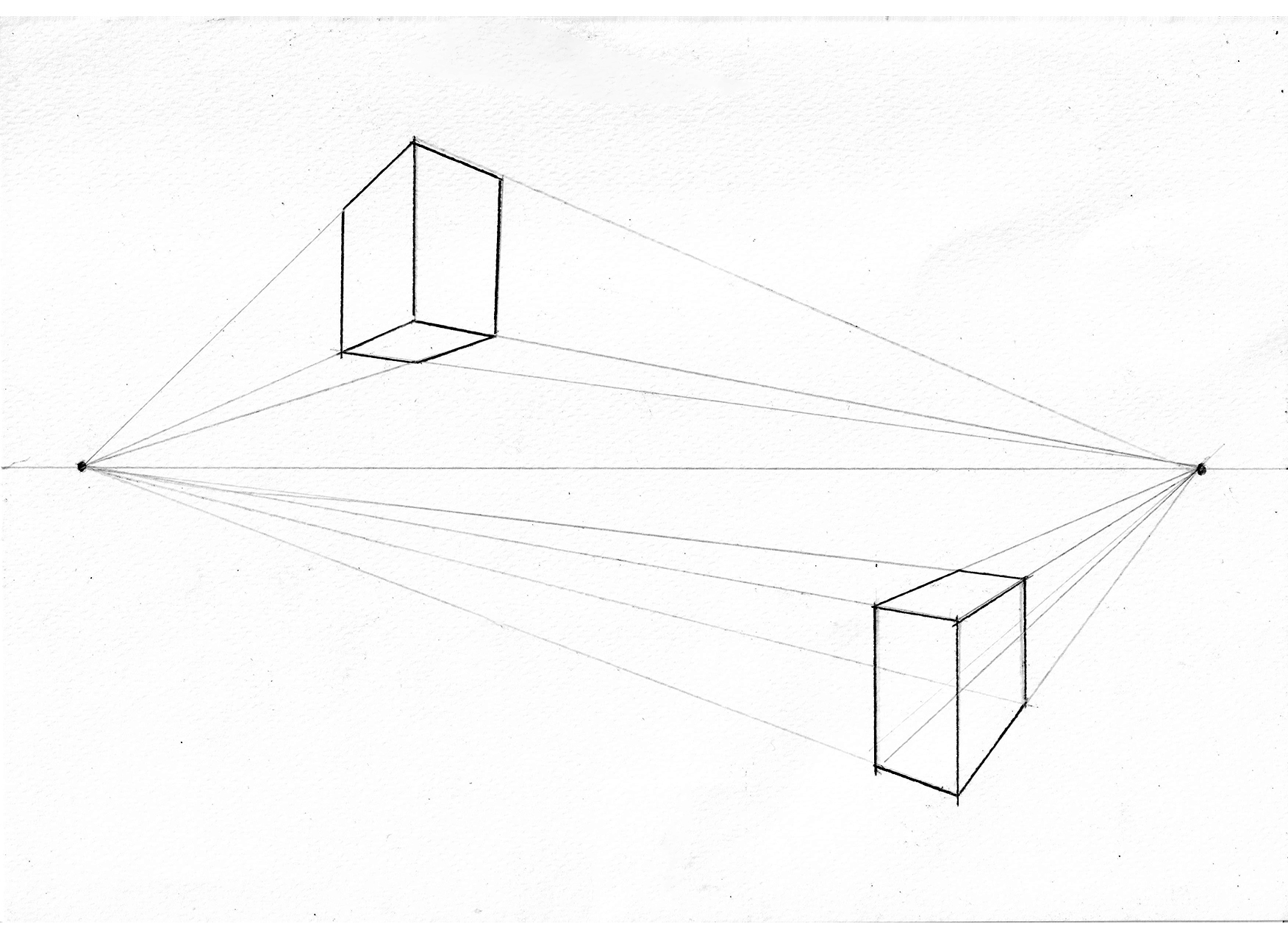
Step 8: Add a Third Box
Draw Another Corner Line: Introduce a third vertical line for a new box, placing it directly on the horizon line. This positioning creates a street-level view, where the box appears at eye level, neither looking up nor down at it.
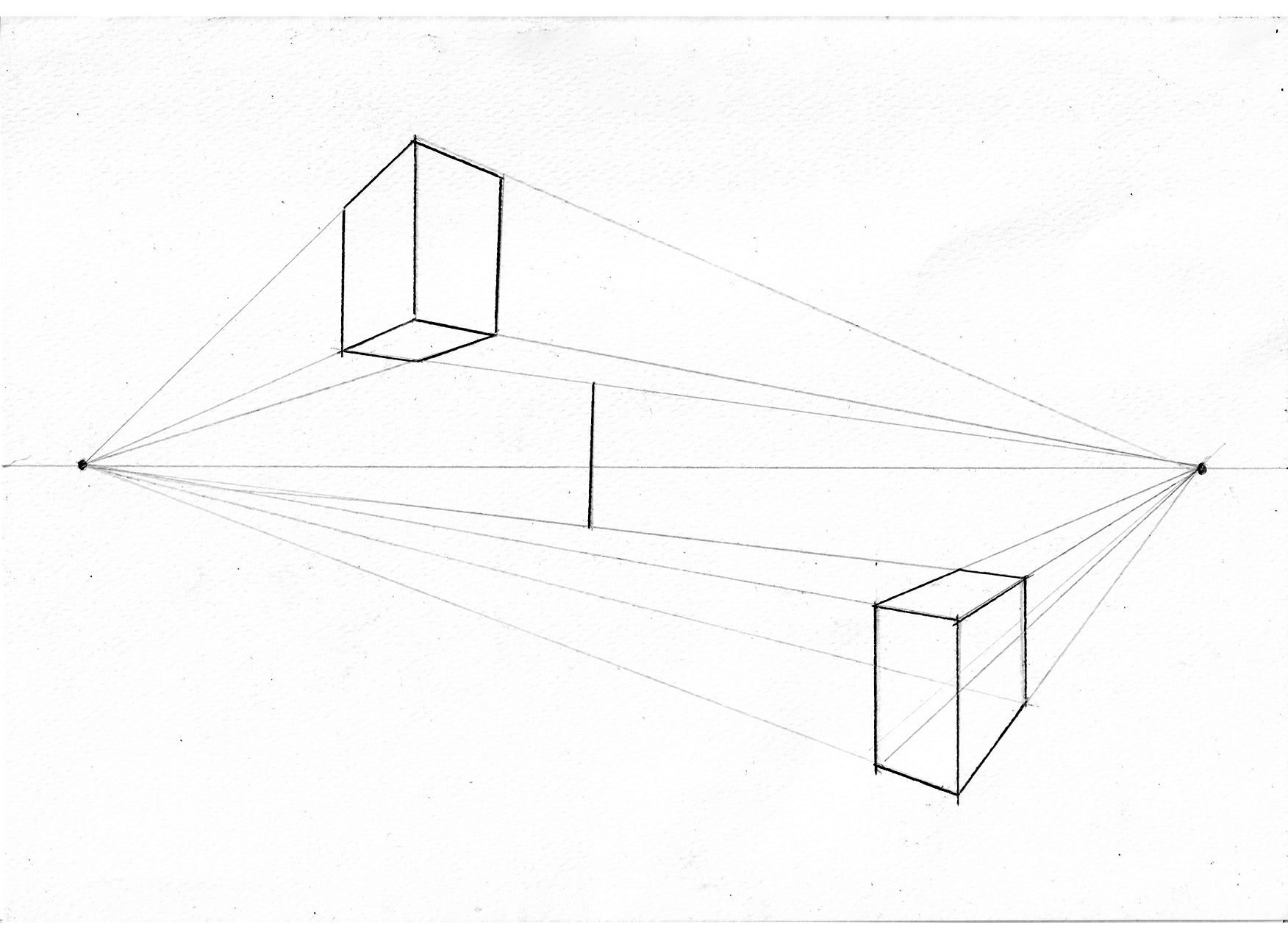
Step 9: Define the Third Box's Planes
- Add Converging Lines: From the top and bottom of the third corner line, draw lines converging towards each vanishing point (VP1 and VP2) to form the side planes.
- Draw Vertical Lines: Within these converging lines, add two vertical lines to define the left and right planes of the third box. Due to the street-level view, only the side planes will be visible.
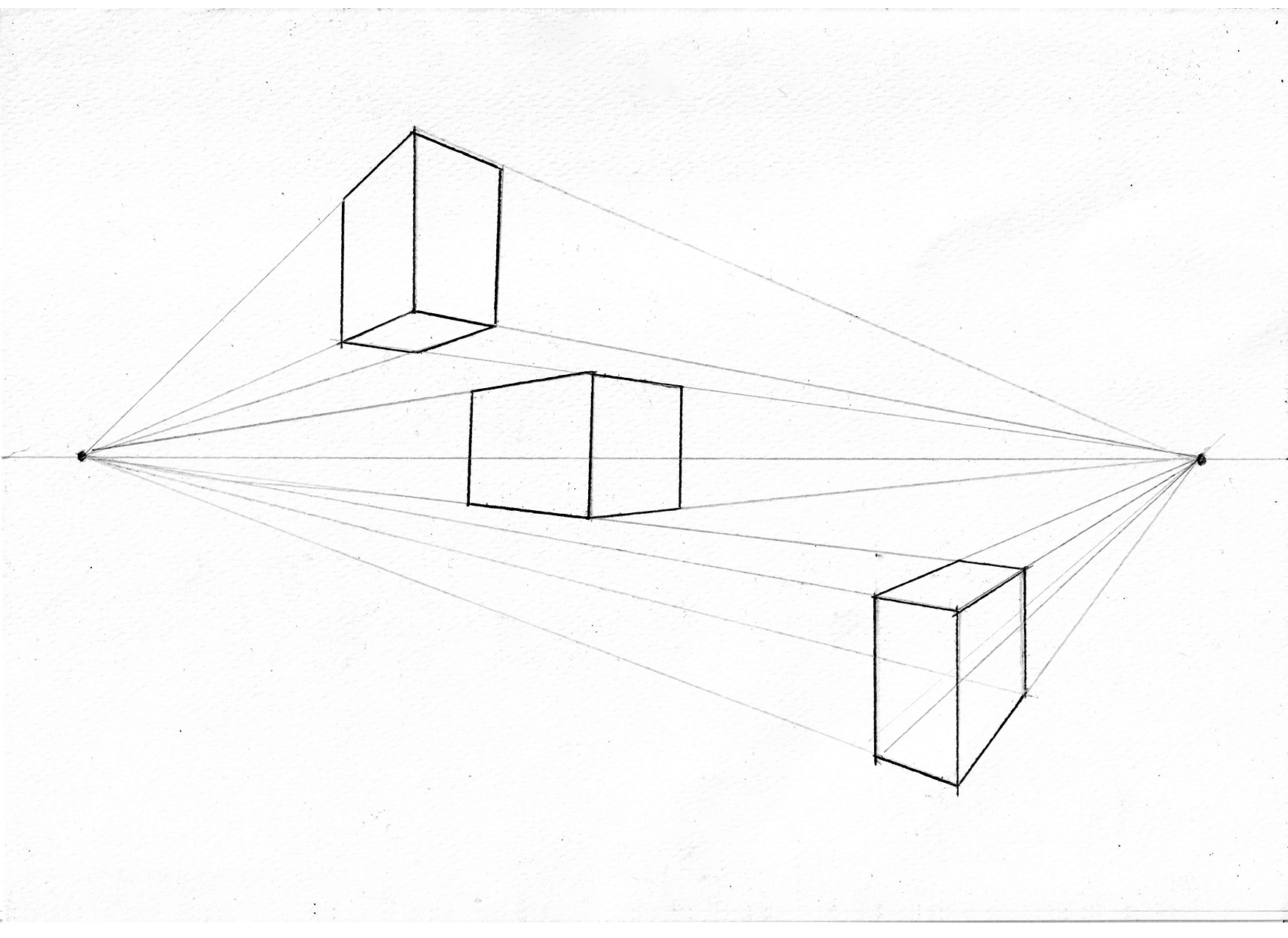
Step 10: Fill the Page with Boxes
- Repeat the Process: Now that you know how to draw boxes using two-point perspective, continue to fill the page by starting with corner lines and following the same steps: adding converging lines, drawing vertical lines to define the planes, and connecting to the opposite vanishing points.
- Experiment with Placement: Vary the placement of your corner lines above, below, and on the horizon line to create a dynamic composition with different perspectives.

Thank you for reading this guide on two-point perspective. I hope you found it helpful and informative. Now, it’s your turn to put this knowledge into practice. Grab your sketchbook and start drawing using two-point perspective. Experiment with different objects, angles, and compositions to see how this technique can transform your artwork. Happy drawing!
